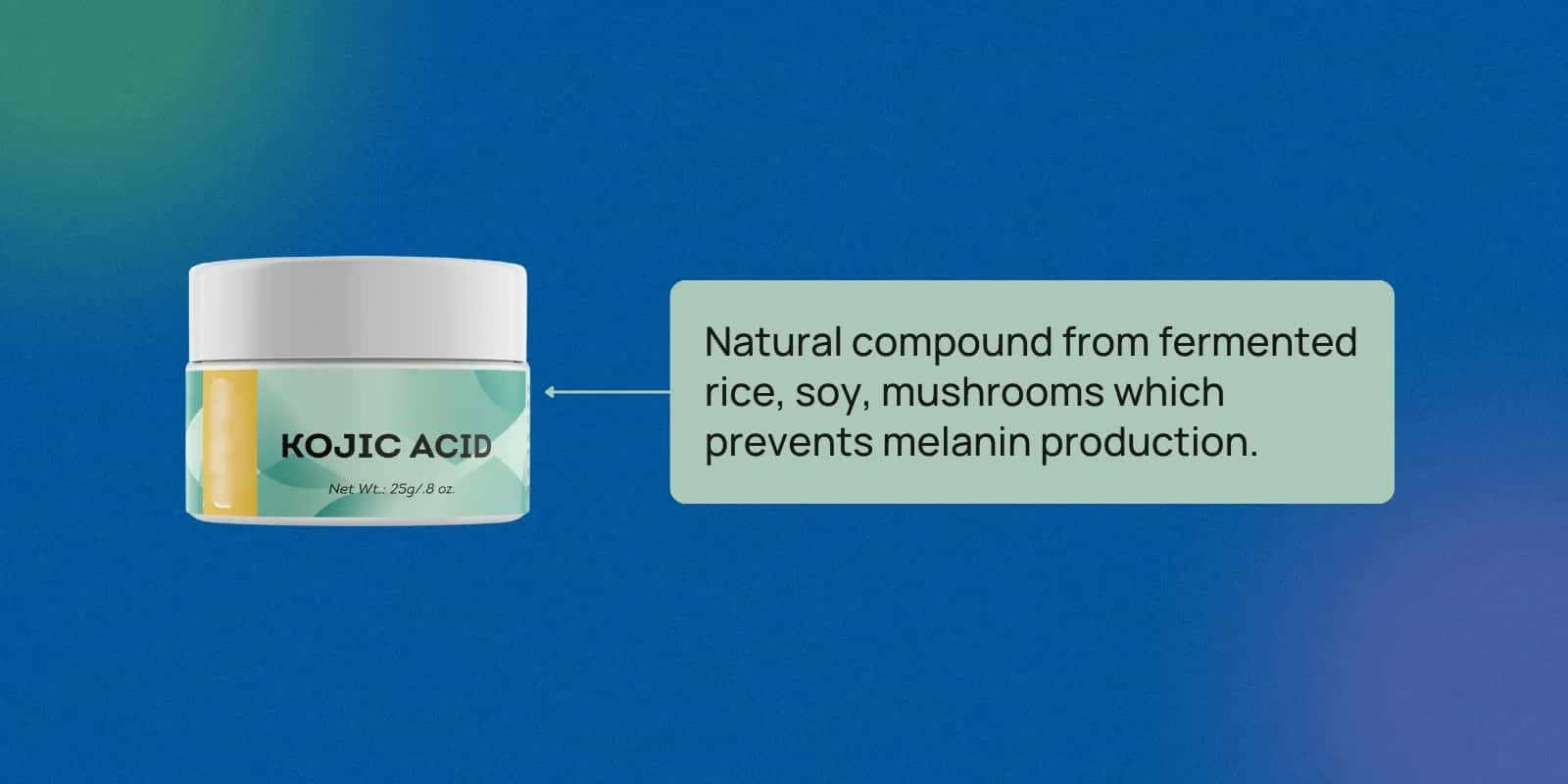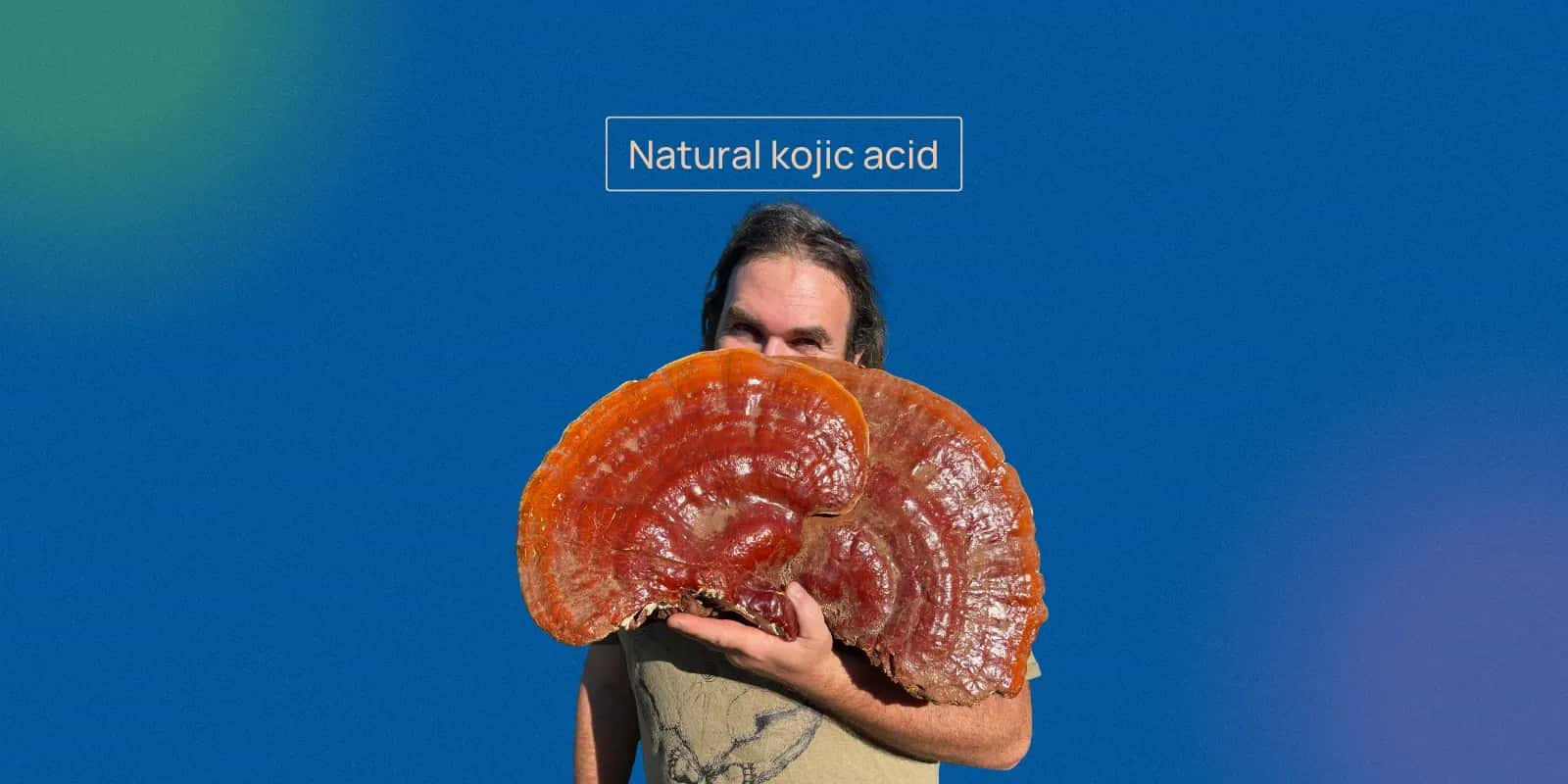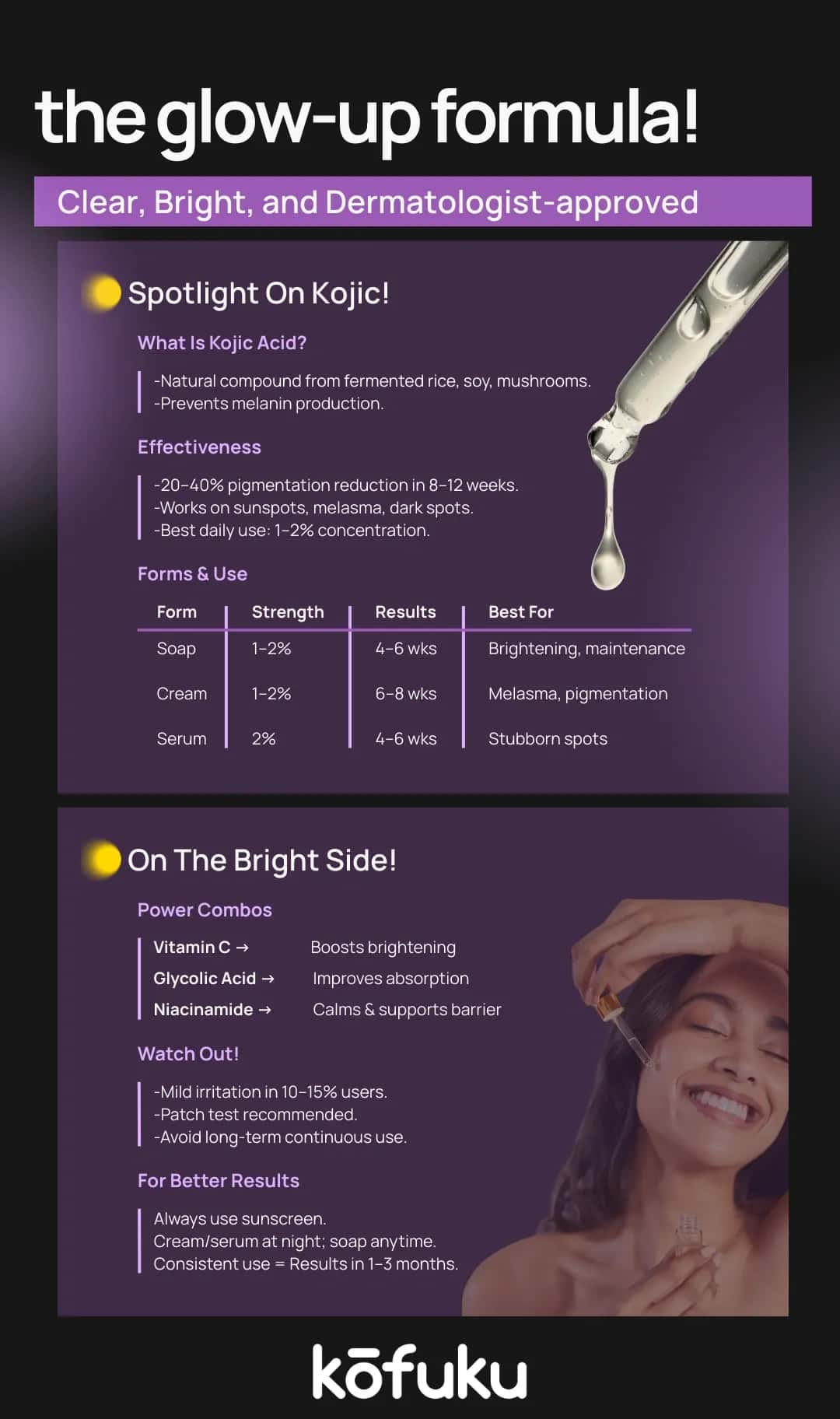Kojic Acid: How It Works as a Soap, Cream & Serum for Even Skin Tone


Introduction
You may have tried all the creams and serums available in the market to achieve that dream skin. Due to changing weather and environmental conditions, skin is exposed to many harmful pollutants, dust, and harmful UV rays. Given this, many seek ways to keep skin healthy and bright.
While our grandmothers and mothers relied on traditional ingredients, such as turmeric, besan and raw milk, Kojic Acid is also gaining popularity due to its amazing properties. Available in soaps, creams, and other skin products, kojic acid is known to be gentler than any chemical leaching agents.
In this blog, we will explore what kojic acid is, why you should consider creams with kojic acid, and the benefits of using ointments for skin whitening and soaps for skin lightening, including their side effects and more.
What is Kojic Acid and How Does It Lighten Skin?
First things first, let's understand what kojic acid is. Kojic acid is obtained from several fungi species and fermented foods like rice, wine and soya sauce. It has recently become popular due to its super effectiveness and mild nature.
Derived from plants, this magical potion can slow down melanin production naturally, causing skin brightening. You can also find kojic acid in soaps, creams, and serums, making it a versatile option for a skincare routine.
Understanding the Science Behind Kojic Acid’s Skin Brightening Properties
Kojic acid has several properties that can help you get an even, brighter, and healthier skin. Here’s how it does that:
How Kojic Acid Inhibits Melanin Production to Fade Dark Spots
Kojic acid inhibits and prevents tyrosine, an amino acid that helps produce melanin, a skin darkening pigment. Melanin is the pigment that affects skin, hair and even eye colour. Excess melanin in certain areas can lead to dark spots, pigmentation or uneven tone. Since kojic acid inhibits its production, it has a lightning effect. It also prevents the formation of new ones, giving you an even skin tone.
Different Forms of Kojic Acid Products: Soap, Cream, Serum, and Ointment
Kojic acid is often used in treating several cosmetic conditions and has been approved for use in cosmetic products in concentrations of one per cent or less. Kojic acid can be found in many different types of skin products, such as creams, serums, cleansers, and soaps.
You can mix powders with water or lotion, depending on the instructions. Some products, like kojic acid soaps and cleansers, should be washed off immediately. Others, like creams and serums, should be left to be absorbed into the skin. Often commonly used for face and hands, kojic acid products can also be used for non-sensitive areas of the body.
Kojic Acid Soap for Skin Whitening: Benefits and Usage Tips
A soap with kojic acid is one of the most popular choices for daily use. Kojic acid soaps for skin whitening work by cleansing the skin while delivering kojic acid directly to the surface, especially the dark spots. Some of the benefits of using kojic acid soaps include:
- Gentle exfoliation and removal of dead skin cells.
- Lightening of dark areas like knees, elbows, and underarms.
- Suitable for oily and acne-prone skin.
So, how to use this kojic acid soap? Start by lathering the kojic soap whitening bar, and apply to the damp skin and leave it to rest for 30 seconds to one minute. Then rinse with water and pat dry. Always use moisturiser to prevent dry skin.

Creams with Kojic Acid: How They Help with Uneven Skin Tone and Whitening
Any cream with kojic acid offers a longer skin contact time compared to kojic acid soaps. Given this, they often work well with stubborn pigmentation and uneven skin tone. These creams are often used as whitening creams for skin and are commonly applied to the face, neck and non-sensitive body areas.
Here are some advantages of using kojic acid creams:
- Continuous hydration while brightening.
- Can be layered with other activities like niacinamide.
- Suitable for normal to dry skin types.
Using Kojic Acid Serums and Ointments for Targeted Skin Brightening
Serums with kojic acid are concentrated formulas designed for quick absorption in the skin and are proven effective for spot treatment like acne scars, dark spots, or melasma patches. Ointment for skin whitening infused with kojic acid can be used to treat pigmentation on areas like elbows, knees, or even scars. Applying this to these areas forms a protective layer to keep the ingredient active for a longer time.
Common Uses: Underarm Bleaching Creams and Skin Lightening Applications
No one likes dark underarms, and hence, kojic acid is often used in underarm bleaching creams to reduce pigmentation in sensitive areas. Skin brightening soaps or creams with kojic acid are very popular for overall skin tone improvement.

Safety & Side Effects of Kojic Acid: What You Should Know
Kojic acid is generally safe for topical use in concentrations up to one per cent, and it must be used correctly and carefully to avoid skin irritation.
Recommended Concentrations and Patch Testing Advice
- Look for kojic acid skin lightening soap with 1% or less concentration for beginners.
- For creams with kojic acid or serums, 1% is effective but gentle.
- Always perform a patch test before first use.
Potential Irritation and Sun Sensitivity Risks
Using concentrated kojic acid on skin may cause skin irritation, like mild redness, dryness, or irritation in sensitive skin. Not using kojic acid correctly may also increase sun sensitivity, and therefore, using sunscreen at all times, even indoors, is crucial.
Who Should Avoid Kojic Acid Products?
-
People living with eczema or extremely sensitive skin should consult a dermatologist first.
-
Pregnant or breastfeeding women should seek medical advice before starting any kojic acid whitening soap or cream.
How to Use Kojic Acid Products Safely: Daily Routine Tips
If you want to achieve the best results along with avoiding irritation, here is a structured routine for you:
-
Cleanse with a mild cleanser or skin brightening soap in the morning.
-
Apply kojic acid cream or kojic acid serum to pigmented areas.
-
Moisturise to maintain skin hydration.
-
Sunscreen (SPF 30+) is a must.
At night, you can always replace sunscreen with a rich moisturiser or ointment for skin whitening to support repair and have hydrated skin.
Combining Kojic Acid with Sunscreen and Other Skincare Products
Studies show that kojic acid works well with:
-
Niacinamide (for added brightening and barrier repair)
-
Vitamin C (for antioxidant protection)
-
Hyaluronic acid (for hydration)
Do not pair kojic acid with strong exfoliants like glycolic acid or high-strength retinoids, as it may cause skin irritation and redness.

FAQs
Q. What is kojic acid, and how does it lighten skin?
A. Kojic acid is a natural compound that inhibits melanin production, gradually fading dark spots, pigmentation, and uneven skin tone, resulting in a lighter, brighter complexion with consistent use.
Q. Is kojic acid soap safe for sensitive skin?
A. Kojic acid soap can be safe for sensitive skin if used in low concentrations and followed with moisturiser, but patch testing is essential to avoid irritation or redness.
Q. How long does it take for kojic acid cream to show results?
A. Most people notice visible brightening and reduced pigmentation within four to eight weeks of regular use, combined with sunscreen for best results and to prevent re-darkening. However, the time may vary depending on your skin and pigmentation.
Q. Can kojic acid serum be used for underarm bleaching?
A. Yes, kojic acid serum can help lighten underarm pigmentation when used consistently, but it should be applied sparingly and followed with moisturiser to prevent dryness or irritation in sensitive areas.
Q. What are the common side effects of using kojic acid products?
A. Possible side effects include mild redness, dryness, itching, or increased sun sensitivity. These effects are usually temporary and can be minimised by patch testing and using sunscreen daily.
Q. How often should I use kojic acid whitening cream or soap?
A. Use kojic acid whitening cream or soap once daily initially. If your skin tolerates it well, you can gradually increase to twice daily while ensuring consistent moisturising and sun protection.
Q. What concentration of kojic acid is safe for daily use?
A. A concentration of up to 1% of kojic acid in creams or soaps is generally safe for daily use, helping brighten skin effectively without causing significant irritation for most users.
Q. Can kojic acid help with dark spots and melasma?
A. Yes, kojic acid effectively reduces dark spots and melasma by inhibiting melanin production, gradually improving skin tone and texture when used consistently with proper sun protection measures.

Does Skin Cancer Always Mean Having Melanoma?

Eight Powerful Rosemary Essential Oil Benefits for Hair, Skin & Health

Risks of Overexposure to Sunlight – Protect Your Skin

Top Benefits of Olive Oil for Hair, Skin, Face & Body: How to Use It Daily

Proven Benefits of Eucalyptus (Nilgiri) Oil for Hair, Skin, and Health

